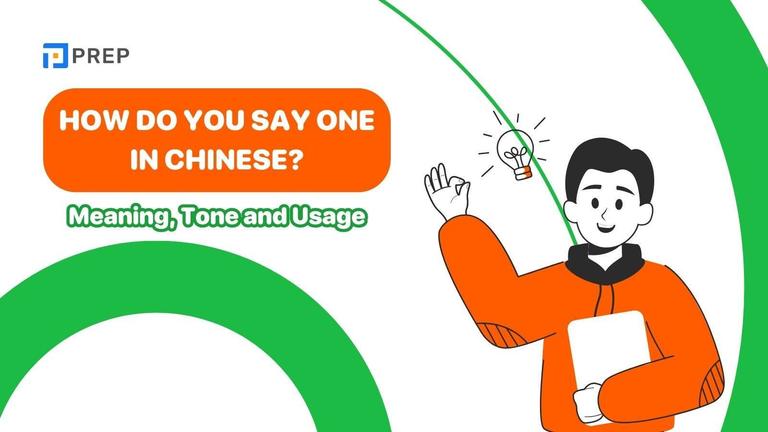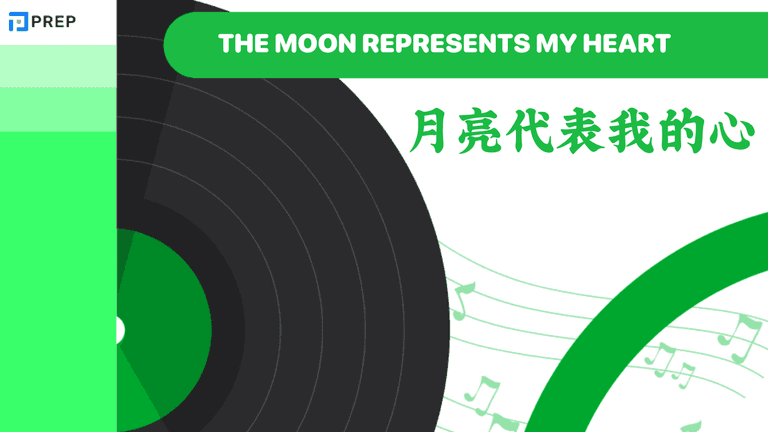All about Chinese National Anthem Lyrics - Meaning, and History
China's national anthem stands as a powerful symbol of national identity, patriotic fervor, and historical resilience. "March of the Volunteers" captures the spirit of a nation that faced existential threats and emerged with renewed determination. This comprehensive guide explores the Chinese national anthem lyrics, origins, meaning, and cultural significance, offering insights into one of the most recognized patriotic compositions in the world.
- I. The Lyrics Up Close: Text, Pronunciation, and Translation
- II. Identifying the Anthem: Official Name and Creators
- III. Decoding the Chinese National Anthem Lyrics: Meaning and Symbolism
- IV. The Anthem's Historical Trajectory: From Film to Nation's Voice
- V. Exploring Further: Related Questions and Nuances
- VI. Conclusion
I. The Lyrics Up Close: Text, Pronunciation, and Translation
Understanding China's national anthem begins with mastering its text. The Chinese national anthem lyrics are presented here in their original form alongside pronunciation guides and English translations to ensure full comprehension of this powerful national symbol.
|
Chinese national anthem lyrics (Hanzi) |
Pinyin Pronunciation |
English Translation |
|
起来!不愿做奴隶的人们! |
Qǐlái! Bù yuàn zuò núlì de rénmen! |
Arise! Those who refuse to be slaves! |
|
把我们的血肉,筑成我们新的长城! |
Bǎ wǒmen de xiěròu, zhù chéng wǒmen xīn de chángchéng! |
Let our flesh and blood forge our new Great Wall! |
|
中华民族到了最危险的时候, |
Zhōnghuá mínzú dào le zuì wēixiǎn de shíhòu, |
The Chinese nation faces its greatest peril, |
|
每个人被迫着发出最后的吼声。 |
Měi gè rén bèi pò zhe fā chū zuìhòu de hǒushēng. |
Each person is forced to unleash their final roar. |
|
起来!起来!起来! |
Qǐlái! Qǐlái! Qǐlái! |
Arise! Arise! Arise! |
|
我们万众一心, |
Wǒmen wàn zhòng yīxīn, |
Our million hearts beat as one, |
|
冒着敌人的炮火,前进! |
Màozhe dírén de pàohuǒ, qiánjìn! |
Braving enemy fire, march on! |
|
冒着敌人的炮火,前进! |
Màozhe dírén de pàohuǒ, qiánjìn! |
Braving enemy fire, march on! |
|
前进!前进!进! |
Qiánjìn! Qiánjìn! Jìn! |
March on! March on! On! |
The proper pronunciation with accurate tones is essential for correctly rendering the Chinese national anthem lyrics, which convey urgency and determination through their rhythmic structure.
II. Identifying the Anthem: Official Name and Creators
"March of the Volunteers" (义勇军进行曲, Yìyǒngjūn Jìnxíngqǔ) serves as the official national anthem of the People's Republic of China. This name itself carries significance, reflecting the voluntary spirit of resistance against foreign aggression that defined China's struggle during a pivotal historical period.
Tian Han (田汉), a prominent playwright and poet, penned the stirring lyrics in 1934 amid rising Japanese aggression against China. His background in revolutionary literature and theater informed his ability to craft words that would resonate with ordinary citizens facing extraordinary circumstances.
Nie Er (聂耳), a talented young composer committed to creating music that served revolutionary purposes, composed the anthem's rousing melody. His career was tragically cut short at age 23 when he drowned in Japan, but his musical legacy lives on through this composition that continues to stir national pride across generations of Chinese citizens.
III. Decoding the Chinese National Anthem Lyrics: Meaning and Symbolism
Beyond literal translation, the Chinese national anthem lyrics contain layers of meaning that reflect the historical context and national spirit of China during one of its most challenging periods.
-
"Arise! Those who refuse to be slaves!" This opening line of china national anthem lyrics serves as both command and proclamation. Written during Japanese occupation when China faced colonization, these words directly challenged the subjugation of Chinese people. The command to "arise" represents more than physical action—it demands moral awakening and national consciousness. The refusal to "be slaves" speaks to the fundamental human dignity that transcends political circumstances, establishing resistance as an ethical imperative rather than merely a strategic choice.
-
"Let our flesh and blood forge our new Great Wall!" This powerful metaphor transforms China's most famous physical structure into a symbol of human sacrifice and determination. Where the original Great Wall was built of stone and earth to repel invaders, this "new Great Wall" would be constructed from the very bodies and determination of the Chinese people. It suggests that national defense ultimately depends not on physical barriers but on the collective will and sacrifice of citizens willing to defend their homeland.
-
"The Chinese nation faces its greatest peril, Each person is forced to unleash their final roar." We can see through china national song lyrics, these lines establish urgent context, framing resistance not as optional but as existential necessity. The "final roar" evokes imagery of cornered animals fighting with desperate courage when all other options are exhausted. This portrays China's struggle against Japanese imperialism as a fight for survival that required extraordinary measures and unified action.
-
"Our million hearts beat as one, Braving enemy fire, march on!" These lines from Chinese national anthem lyrics emphasize collective action and unity as the pathway to victory. The "million hearts" represent the fundamental power of mass mobilization that would ultimately prove decisive in China's resistance struggles. The command to "march on" despite enemy fire celebrates courage under duress and the forward momentum needed for revolutionary success, reflecting the anthem's original context as a marching song meant to inspire troops and civilians alike.
-
The repetition of "Arise!" and "March on!" The Chinese national anthem lyrics create rhythmic urgency that mirrors the persistent determination required during protracted struggle, making these commands not just lyrics but principles of national character.
IV. The Anthem's Historical Trajectory: From Film to Nation's Voice
The journey of "March of the Volunteers" from entertainment to national symbol reveals much about China's modern political development.
The song originated in the 1935 patriotic film "Sons and Daughters in a Time of Storm" (风云儿女, Fēngyún Érnǚ), which depicted Chinese resistance against Japanese aggression. The film's narrative of ordinary citizens rising to defend their homeland resonated deeply with audiences facing similar threats, and the marching song quickly transcended its cinematic origins.
During the War of Resistance Against Japan (1937-1945), the song gained widespread popularity among Chinese from diverse backgrounds and political affiliations. Its straightforward call to action and accessibility made it ideal for mass mobilization, as it could be easily learned and sung by soldiers, students, workers, and peasants alike. The song and china national song lyrics spread organically through resistance networks, becoming a unifying anthem even before receiving official recognition.
The song's journey to official status followed these key milestones:
-
In 1949, the Chinese People's Political Consultative Conference selected "March of the Volunteers" as the provisional national anthem of the newly established People's Republic of China. Its revolutionary spirit aligned with the new government's identity, while its widespread popularity among ordinary Chinese gave it legitimacy beyond political decree.
-
During the Cultural Revolution (1966-1976), the anthem faced challenges as Tian Han fell into political disfavor. "The East is Red," a song directly praising Mao Zedong, unofficially replaced it in many contexts. Following the Cultural Revolution, the original Chinese national anthem lyrics were restored in 1978, and the anthem regained its official status.
-
In 2004, "March of the Volunteers" was formally incorporated into the Constitution of the People's Republic of China, elevating its legal status and protection.
-
The 2017 National Anthem Law established specific protocols for playing, singing, and protecting the dignity of the anthem. This legislation standardized the anthem's use in official ceremonies, educational settings, and international events while prohibiting commercial exploitation or disrespectful alterations.
-
This evolution from film song to constitutionally protected national symbol reflects China's journey through revolution, nation-building, and the establishment of modern national identity.
V. Exploring Further: Related Questions and Nuances
This section addresses specific questions that deepen understanding of the Chinese national anthem lyrics beyond its basic elements.
1. What constitutes disrespect toward the national anthem under Chinese law?
The 2017 National Anthem Law defines several actions as disrespectful or illegal treatment of the Chinese national anthem lyrics and music. These include deliberately altering the lyrics or melody, performing the anthem in a distorted or derogatory manner, and using the anthem in commercial advertisements, private funerals, or other inappropriate contexts. The law also prohibits playing the anthem in places considered unsuitable for its dignity, such as entertainment venues or as background music in public spaces. These regulations reflect the anthem's status not merely as music but as a protected symbol of state sovereignty.
2. How does "March of the Volunteers" differ from previous Chinese state anthems?
"March of the Volunteers" represents a revolutionary departure from earlier Chinese state anthems in both theme and composition. The Qing Dynasty's "Cup of Solid Gold" (巩金瓯, Gǒng Jīn Ōu) emphasized imperial grandeur and dynastic continuity, while the Republic of China's "National Anthem of the Republic of China" (中華民國國歌, San Min Chu-i) focused on Dr. Sun Yat-sen's Three Principles of the People as abstract political ideals. In contrast, "March of the Volunteers" speaks directly to ordinary citizens, emphasizes immediate action rather than abstractions, and contains militancy born from existential threat rather than ceremonial formalism. This shift reflects China's transition from imperial and theoretical governance to revolutionary mass mobilization.
3. When must the national anthem be played versus when is its use restricted?
The Chinese national anthem lyrics must accompany specific formal occasions including major national celebrations like National Day (October 1st), diplomatic ceremonies involving foreign dignitaries, military ceremonies, Olympic medal ceremonies involving Chinese athletes, and the daily flag-raising ceremony at Tiananmen Square. It must also be included in school education. Conversely, the anthem must not be used in commercial advertisements, trademarks, background music in public spaces, private events like weddings or funerals, or entertainment venues. These distinctions maintain the anthem's ceremonial significance by preserving its association with formal state functions rather than everyday activities.
4. Does today's version differ from Nie Er's original composition?
Yes, though the fundamental melody remains unchanged. The modern orchestral arrangement of the anthem displays several differences from Nie Er's original 1935 recording. The contemporary version uses a somewhat slower tempo that enhances ceremonial dignity over revolutionary urgency. Modern performances feature full orchestration with greater emphasis on strings and brass instruments compared to the sparser, more percussion-driven original recording. Additionally, modern choral arrangements typically feature more formal vocal training techniques compared to the somewhat raw, urgent style of early performances. These evolutions reflect the anthem's transition from revolutionary song to formal state symbol while preserving its essential character.
VI. Conclusion
The Chinese national anthem transcends ceremonial function, embodying modern China's identity through calls for collective action and sacrifice. Its journey from revolutionary song to constitutional symbol parallels China's evolution from struggle to global power. Today's commands to "Arise!" and "March on!" resonate with contemporary aspirations—economic development, technological advancement, and national unity. The anthem serves as a living bridge connecting China's revolutionary past with its ambitious future, reminding citizens that current achievements stem from previous generations' determination.

Hi I'm Chloe, and I am currently serving as an Product Content Administrator at Prep Education. With over five years of experience in independent online IELTS study and exam preparation, I am confident in my ability to support learners in achieving their highest possible scores.











